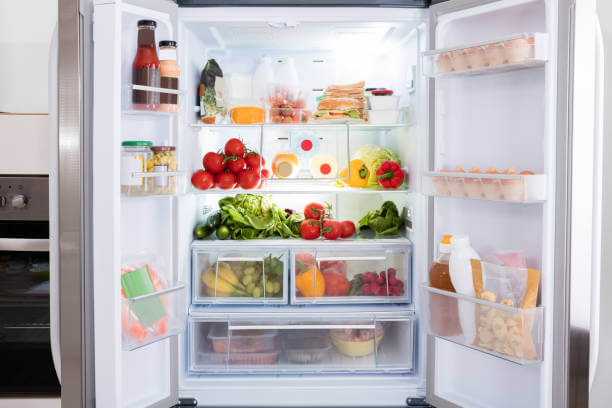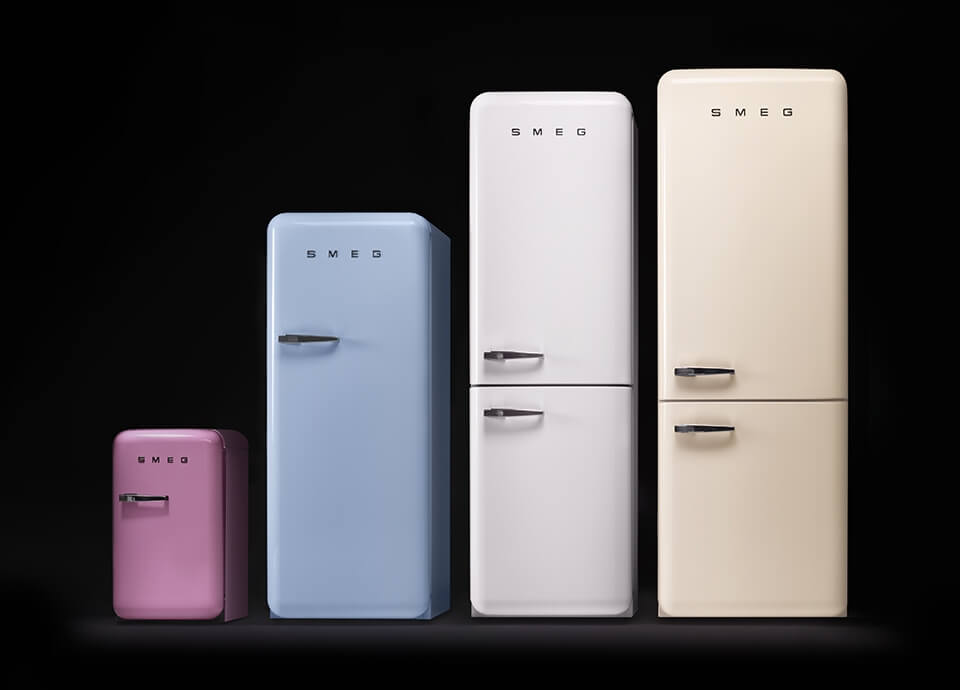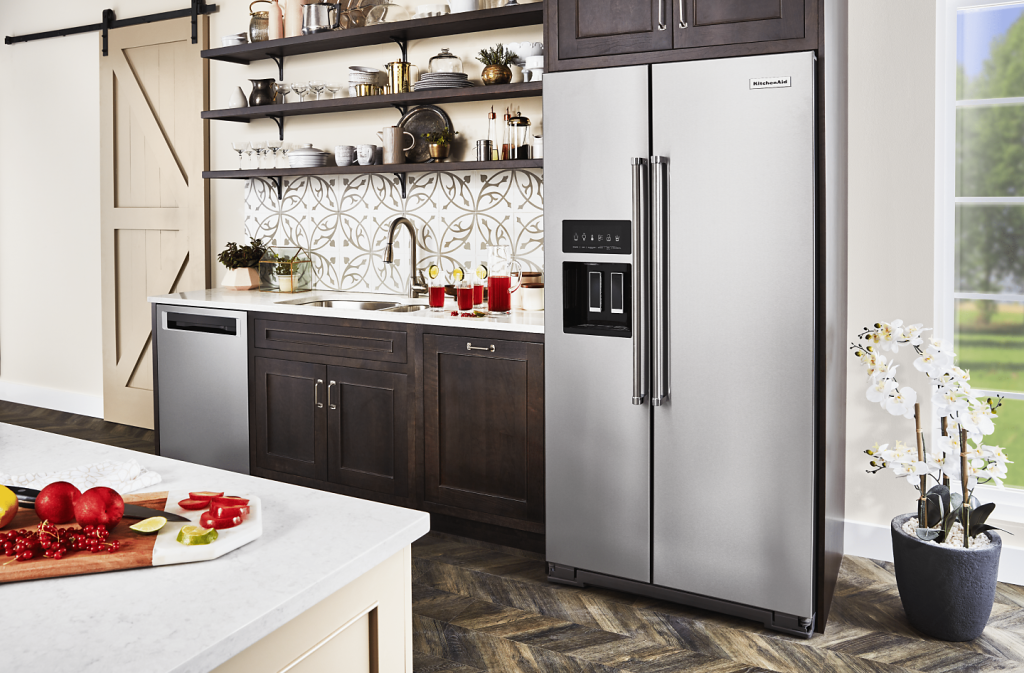Whether you are a first-time buyer or looking to change your existing fridge, finding the right one can cause you a dilemma.
After all, you have to decide on the type, the size, the color, and where you will place it – you may start panicking at some point—but fear not; we are here to your rescue!
Of course, which color you want or which design you require is your decision. We will surely help you with the major part of the process – determining the size of it!
But if you want to expand your knowledge, check out our previous blog post on Samsung refrigerator reset, which offers a comprehensive look into this subject.
So, keep reading this article to know about the standard refrigerator size and which will suit your space and accommodate it well.
What is the Standard Size of a Refrigerator?

The standard size of a refrigerator is variable. That is, it changes depending on the size and design of the fridge.
Here is a table that will guide you through the ranges of standard refrigerator sizes in the US.
1. According to Capacity

Capacity |
Width (in inches) |
Depth (in inches) |
Height (in inches) |
Space Suitable For |
| Small (11 cu. ft – 13 cu. ft) | 24 | 29 – 33 | 60 – 75 | Dormitory, kitchenettes, and studio apartments |
| Medium (18 cu. ft – 22 cu. ft) | 25 – 33 | 29 – 36 | 65 – 75 | Medium to large-sized kitchens |
| Large (22 cu. ft – 28 cu. ft) | 36 | 33 – 36 | >70 | Large-sized kitchens, especially counter depth |
Because generally, every adult needs around 4 to 6 cubic feet of fridge space to store their groceries, the refrigerators mentioned above sizes are suitable for the following groups of people:
- Small: Ideal for people living alone or two people living together
- Medium: Ideal for a family or group of 4 people living together
- Large: Ideal for a family or group of 5+ people living together
2. According to Design

Design |
Width (in inches) |
Depth (in inches) |
Height (in inches) |
Features |
| French Door | 29-36 | 29 – 35 | 67 – 70 | This is a medium-sized fridge featuring two identical-sized doors that open from the middle. The freezer is at the bottom. |
| Side-by-Side | 32 – 39 | 29 – 31 | 66 – 72 | This, too, features two doors that divide vertically, with one side housing the freezer and the other housing the fridge. This large-sized refrigerator thus provides equal space for the fridge and the freezer. |
| Top Freezer | 28 – 32 | 28 – 33 | 61 – 66 | Energy-efficient small to medium-sized refrigerators present the freezer at the top and are slightly smaller than their bottom-freeze counterparts. |
| Bottom Freezer | 29 – 33 | 24 – 34 | 67 – 70 | The freezer space is larger than the refrigerator mentioned above design. |
When it comes to family size, the different types of refrigerators (according to design) are ideal for:
- French Door Refrigerator: Ideal for large families of 5 members or more.
- Side-by-Side Refrigerator: Ideal for large families and provides equal space for storing fresh and frozen food.
- Top Freezer Refrigerator: Ideal for small spaces and small families of 1 to 4 members
- Bottom Freezer Refrigerator: Ideal if you require a larger frozen food storage section.
3. According to The Depth of Model

Type |
Depth (in inches) |
Features |
| Counter Depth | 24 – 28 | These refrigerators are designed to align with kitchen counters so they won’t extend beyond counters. Hence, they are usually taller and wider than other types to make up for the little depth. |
| Standard Depth | 30 – 40 | These refrigerators usually extend 6” beyond countertops, thus offering a larger storage section. |
How Do You Measure the Volume of a Refrigerator?
The volume of a refrigerator = Height of refrigerator x Width of refrigerator x Depth of refrigerator
This calculation will give you the cubic inch volume (or capacity). To extract the capacity in cubic feet (the standard measurement), divide the obtained value by 1728.
Measuring the Dimensions of a Refrigerator
Here is a step-by-step guide on measuring the dimensions of a refrigerator you are planning to buy for your space.
Step 1: Measure the Width
Measure the distance between the surrounding cabinetry where you plan to place the fridge. It could be the distance between two walls, wall and furniture, or furniture and furniture.
The best practice is to measure the distance below your countertops above, the space between your cabinetry, and the base of the surrounding furnishings. Take into consideration the narrowest depth.
If you have one open end, the width should not be much of a worry. Keep a space of 3¾” between the surrounding fittings and the door hinge on the side where the door opens.
Step 2: Measure the Height
Measure the distance between the floor and the lower end of the cabinet at the overhead of your refrigerator. Measure from the floor to the front of the cabinet and then from the floor to the back end.
If they are unequal, consider the smaller height. Also, consider the door hinge of the overhead cabinets (if any) to ensure smooth opening and closing of the top sections of your refrigerator.
Step 3: Measure the Depth
Measure the distance between the wall and the edge of your surrounding cabinets and countertops. If you are looking for counter-depth models, this should be the perfect depth measurement. If you are looking for standard-depth refrigerators, you can extend up to 6 inches beyond the countertop edges.
Step 4: Measure Island Length
If you have an island in your kitchen, you must measure the distance between the same and the lower end of the refrigerator, especially if you have a bottom freezer.
Step 5: Measure Ventilation Space
To the dimensions you have measured for your refrigerator, include at least ½ inches of space between each side. Leave at least ½” on either side, ½” at the bottom, 2 inches at the back, and 1-2 inches at the top of your fridge to provide ventilation space. This prevents overheating, and your fridge will last longer.
Step 6: Measure Additional Space
The additional space you need to include is for the doors and drawers of your refrigerator. Ensure that there is no obstruction to the doors and freezers when you open them to prevent a hassle when working in the kitchen and to prevent damage to your electrical appliance.
Conclusion
The standard size of a refrigerator varies depending on the model you choose. But now that you have the guide measuring the dimensions should not be as hard as you thought earlier.
Prepare a map of your kitchen entrance beforehand so delivery and installation of your new fridge feel as easy as a breeze!
So, which type of refrigerator are you planning to lay your hands on? How much space do you think your kitchen will allow for it? Measure the dimensions yourself and let us know in the comments section below.

